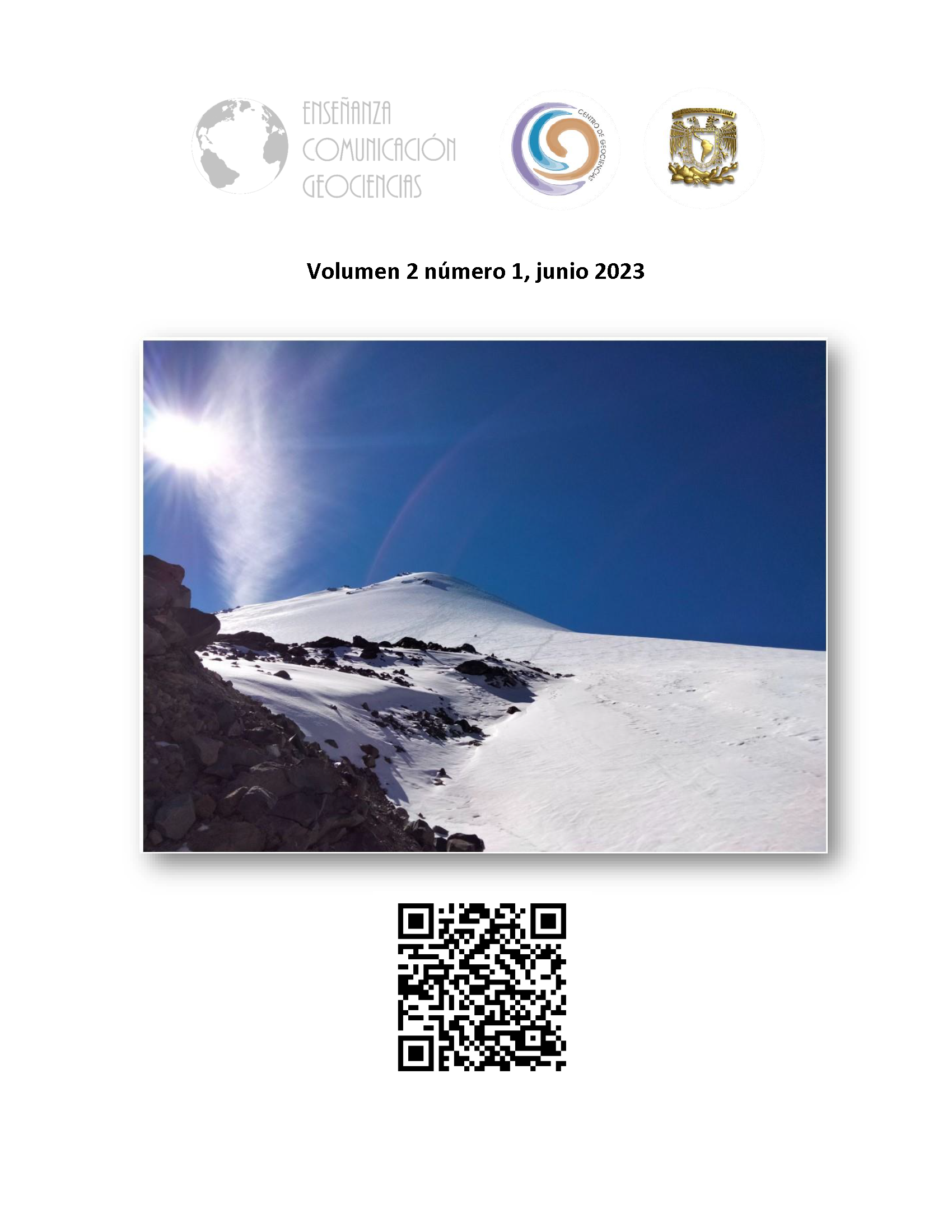Abstract
The oceans are vertically stratified due to differences in the water density. These differences occur as a result of water temperature and/or salinity. This document describes how to represent in a practical and simple way, the stratification and formation of water masses in the ocean caused by the differences in water density. The experiments here described can be conducted by groups of three or four people. The required material is simple, inexpensive, and easily accessible.
References
Behrenfeld, M.J., OíMalley, R., Siegel, D., McClain, C. Sarmiento, J., Feldman, G., Milligan, A., Falkowski, P., Letelier, R. y Boss, E. (2006). Climate-driven trends in contemporary ocean productivity. Nature, 444, 752–755. https://doi.org/10.1038/nature05317
Denny, M. (2007). How the Ocean Works: An Introduction to Oceanography. Princeton University Press, Princeton, NJ, 344 pp
Doney, S. (2006). Plankton in a warmer world. Nature, 444, 695–696. https://doi.org/10.1038/444695a
Garrison, T.S. (2007). Oceanography: An Invitation to Marine Science. Sixth edition. Thomson Brooks/Cole, 608 pp.
Pabón Caicedo, J.D., Rojas, P.J., Montealegre Bocanegra, J.E., Robertson, K., Ceballos Lievano, J.L., Martínez Ardila, N.J., y Ñañez, E. (1998). El océano.
The Open University. (1999). Waves. In Open University Oceanography (Eds.) Waves, Tides and Shallow-Water Processes, Chapter 1 Waves. Butterworth-Heinemann. Oxford. https://doi.org/10.1016/B978-008036372-1/50002-7
Tomczak M. (1999). Some historical, theoretical, and applied aspects of quantitative water mass analysis. Journal of Marine Research, 57 (2): 275–303.

This work is licensed under a Creative Commons Attribution-NonCommercial 4.0 International License.
Copyright (c) 2023 Universidad Nacional Autónoma de México

